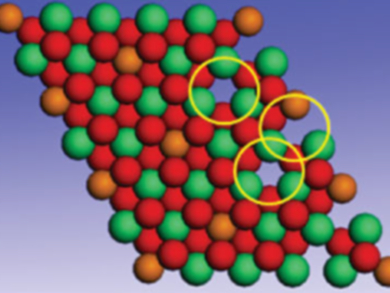Defects are important structural features that dominate catalytic activities in a variety of heterogeneous catalysts, especially metal oxides. This also holds true for zinc-containing photocatalysts, where coordinatively unsaturated Zn centers make the defective yet active sites, but they are rather challenging to obtain.
Tierui Zhang, Technical Institute of Physics and Chemistry, Chinese Academy of Sciences, Beijing, China, and colleagues have developed a facile strategy to create defects in ultrathin ZnAl-layered double hydroxide nanosheets by increasing the density of oxygen vacancies. The unsaturated zinc ions, along with their neighboring oxygen vacancies, can effectively adsorb carbon dioxide while facilitating the electron transfer reaction, expediting the catalytic photoreduction of carbon dioxide to carbon monoxide.
The researchers provide a promising noble metal-free platform for the photocatalytic conversion of carbon dioxide, and more importantly, their approach is not limiting to zinc, but also readily adaptable for introducing other coordinatively unsaturated metals such as Fe, Co, Ni, Ti, and more.
- Defect-Rich Ultrathin ZnAl-Layered Double Hydroxide Nanosheets for Efficient Photoreduction of CO2 to CO with Water,
Yufei Zhao, Guangbo Chen, Tong Bian, Chao Zhou, Geoffrey I. N. Waterhouse, Li-Zhu Wu, Chen-Ho Tung, Lorna J. Smith, Dermot O’Hare, Tierui Zhang,
Adv. Mater. 2015.
DOI: 10.1002/adma.201503730




